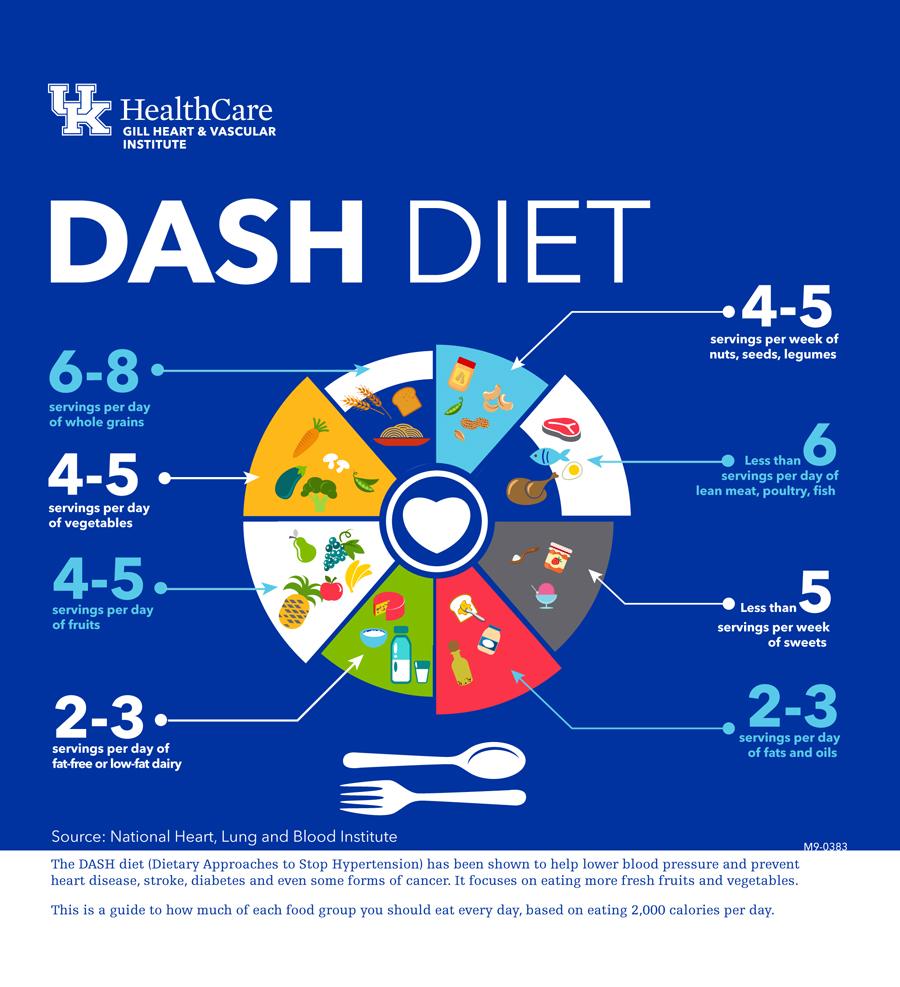The DASH Diet is Easy to Follow and Good for Your Health
Do you want to eat better, but don’t know where to start? Consider the Dietary Approaches to Stop Hypertension, or DASH diet.
The DASH diet was initially created to help lower blood pressure. But studies have also found the DASH diet to be one of the best options to prevent heart disease, stroke, diabetes and even some forms of cancer. Research also shows the DASH plan is safe and effective for short-term and permanent weight loss.
The best news is the DASH diet is easy to follow because it does not restrict entire food groups. Because the plan focuses on fresh fruits and veggies, controlling your calories is easier, too. Learn more about the DASH diet below.

What is the DASH Diet?
The DASH plan is promoted by the National Heart, Lung and Blood Institute, part of the National Institutes of Health. The plan helps reduce the risk for serious health problems because it is low in:
- Saturated fat
- Cholesterol
- Total fat
- Red meat
- Sweets
- Sugary beverages
The DASH diet encourages:
- Fruits
- Vegetables
- Fat-free or low-fat milk and dairy products
- Whole-grain foods
- Fish
- Poultry
- Nuts
The DASH diet is also rich in important nutrients such as:
- Potassium
- Magnesium
- Calcium
- Protein
- Fiber
Tips for following the DASH Diet
To reduce the amount of sodium in your diet, try these steps:
- Choose fresh, frozen or canned vegetables that have low sodium or no added salt.
- Use fresh poultry, fish or meat instead of canned, smoked or processed options.
- Limit cured foods such as bacon and ham, foods packed in brine, and condiments.
- Cook rice or pasta without salt.
- Cut back on frozen dinners, packaged mixes, and canned soups or broths.
- Rinse canned foods such as tuna and canned beans to remove some of the salt.
- Use spices instead of salt to flavor foods.
- Add fruit to breakfast or have it as a snack.
- Treat meat as one part of the whole meal, instead of the main focus.
Some days you might eat more sodium or fewer foods from one group than the plan suggests. But don’t worry. Try your best to keep the average on most days close to the DASH plan levels.
DASH diet guidelines
Here’s how much of each food group you should eat every day, based on eating 2,000 calories per day.
6-8 servings of whole grains. A serving size is about one slice of bread, 1 ounce of dry cereal or 1/2 cup of cooked rice or pasta.
4-5 servings of vegetables. A serving size is about 1 cup of raw, leafy vegetable or a 1/2 cup of cut-up raw or cooked vegetables.
4-5 servings of fruits. A serving size is about one medium fruit; 1/4 cup of dried fruit; 1/2 cup of fresh, frozen or canned fruit; or 1/2 cup of real fruit juice.
2-3 servings of fat-free or low-fat dairy. A serving size is about 1 cup of milk or yogurt or 1 1/2 ounces of cheese.
Up to 6 servings of lean meat, poultry, fish. A serving size is about 1 ounce of cooked meat, poultry, or fish, or one egg.
4-5 servings per week of nuts, seeds, legumes: A serving size is about 1/3 cup or 1 1/2 ounces of nuts, 2 tablespoons of peanut butter, 2 tablespoons or 1/2 ounce of seeds, 1/2 cup of cooked, dry beans or peas.
2-3 servings of fats and oils: A serving size is about 1 teaspoon of soft margarine, 1 teaspoon of vegetable oil, 1 tablespoon of mayonnaise or 2 tablespoons of salad dressing.
Up to 5 servings per week of sweets: A serving size is about 1 tablespoon of sugar, 1 tablespoon of jelly or jam, 1/2 cup of sorbet or gelatin or 1 cup of lemonade.
